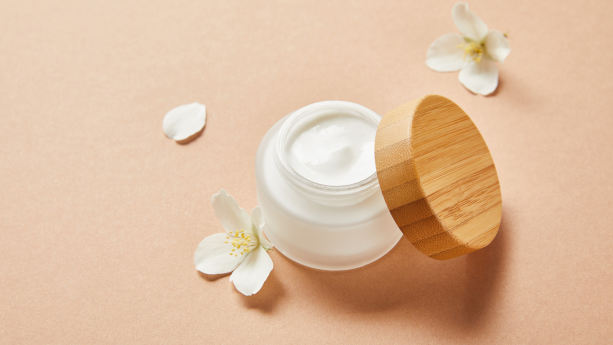
This guide covers requirements for skincare products, such as body lotion and soap. While we mainly focus on the Cosmetic Products Regulation and how the regulation relates to skin care products, we also cover the REACH Regulation, POPs Regulation, and Commission Decision (EU) 2021/1870.
Methodology: We list examples of skincare products provided in Annexes II to V of the Cosmetic Products Regulation. Also, we list examples of restricted substances from the following sources:
a. Annex II of the Cosmetic Products Regulation
b. Annex III to V of the Cosmetic Products Regulation (only substances for which skincare products are specifically mentioned)
c. Commission Decision (EU) 2021/1870 establishing the EU Ecolabel criteria for cosmetic products and animal care products (only substances for skincare care products are specifically mentioned)
d. REACH Regulation
Content Overview

FREE CONSULTATION CALL (US, EU & UK)
- Request a free 30-minute call with Ivan Malloci to learn how we can help you with:
- Find product requirements
- Certification and labeling
- Lab testing
Cosmetic Products Regulation
Examples of skincare products
The Preamble to Annexes II to VI of the Cosmetic Products Regulation lists the definitions for various types of cosmetics. Here we list the definitions that are relevant for skincare products:
a. Rinse-off products – Cosmetic products meant for removal after application on the hair, skin, or mucous membranes.
b. Leave-on skin products – Cosmetic products meant to remain in contact with the hair, skin, or mucous membranes for a long time.
c. Skin products – Cosmetic products meant for application on the skin.
We also list several examples of skincare products, taken from Annexes III–V of the regulation:
- Soap
- Callosity softener/remover
- Rinse-off products
- Leave-on products
- Anti-perspirants
- Body lotion
- Depilatories
Prohibited substances in skincare products
Annex II of the regulation lists substances banned from use in cosmetic products. This prohibition is not unique to skincare products. Some substances are prohibited when specifically used in hair products, for instance. Note that we could not find substances specifically banned from use in skincare products.
Here we list some examples of prohibited substances from Annex II:
- N-(5-Chlorobenzoxazol-2-yl)acetamide
- (2-Acetoxyethyl)trimethylammonium hydroxide (Acetylcholine) and its salts
- Deanol aceglumate (INN)
- Spironolactone (INN)
- [4-(4-Hydroxy-3-iodophenoxy)-3,5-diiodophenyl]acetic acid (Tiratricol (INN)) and its salts
Restricted substances in skincare products
Annex III contains substances subject to certain restrictions. Below we list a few examples of restricted substances relevant to skincare products, and some of the conditions for restrictions. Note that additional conditions might exist, and are available in the regulations
| Substance | Product type / Body parts | Maximum concentration / Other restrictions | Warnings / Conditions of use |
|
Hydrogen peroxide |
Skin products |
4 % of H2O2, present or released |
Contains hydrogen peroxide Avoid contact with eyes Rinse immediately if product comes into contact with them. |
|
Aluminium zirconium chloride hydroxide complexes |
Anti-perspirants |
20 % (as anhydrous aluminium zirconium chloride hydroxide) 5.4 % (as zirconium) |
Do not apply to irritated or damaged skin |
|
Benzoic acid, 2-hydroxy- |
Body lotion |
0.5 % |
Not to be used for children under 3 years of age |
|
(1-Hydroxyethylidene-diphosphonic acid) and its salts |
Soap |
0.2 % (as etidronic acid) |
N/A |
Allowed colorants in skincare products
Annex IV contains substances permitted for use in colorants in cosmetic products. Here are a few examples of such substances relevant to skincare products, and some of the conditions for restrictions.
| Substance | Product type / Body parts | Maximum concentration / Other restrictions | Warnings / Conditions of use |
|
Sodium tris(1,2-naphthoquinone 1-oximato-O,O’)ferrate(1-) |
Rinse-off products |
N/A |
N/A |
|
2,4-Dihydro-5-methyl-2-phenyl-4-(phenylazo)-3H-pyrazol-3-one |
Rinse-off products |
N/A |
N/A |
|
N,N’-(3,3′-Dimethyl[1,1′-biphenyl]-4,4′-diyl)bis[2-[(2,4-dichlorophenyl)azo]-3-oxobutyramide] |
Rinse-off products |
Maximum 3,3′-dimethylbenzidine concentration in the colouring agent: 5 ppm |
N/A |
|
Hydrogen 9-[(3-methoxyphenyl)amino]-7-phenyl-5-(phenylamino)-4,10-disulphonatobenzo[a]phenazinium, sodium salt |
Rinse-off products |
N/A |
N/A |
Allowed preservatives in skincare products
Annex V contains a list of substances permitted for use as preservatives in cosmetic products. We list below some examples of substances relevant to skincare products, and examples of the conditions for restrictions.
| Substance | Product type / Body part | Maximum concentration / Other restrictions | Warnings / Conditions of use |
|
Benzoic acid and its sodium salt |
Rinse-off products |
2.5 % (acid) |
N/A |
|
Biphenyl-2-ol |
Leave-on products |
0.15 % (as phenol) |
N/A |
|
5-Bromo-5-nitro-1,3-dioxane |
Rinse-off-products |
0.1 % Avoid formation of nitrosamines |
N/A |
|
3-Iodo-2-propynylbutylcarbamate |
Leave-on products |
0.01 % Not to be used in body lotion and body cream |
Not to be used for children under 3 years of age |
Allowed UV filters in skincare products
UV filters are substances meant to protect the skin from specific types of UV radiation by either reflecting, scattering, or absorbing it. Annex VI of the regulation contains substances that are permitted for use in UV filters in cosmetic products. Here are a few examples of such substances.
| Substance | Product type / Body parts | Maximum concentration / Other restrictions | Warnings / Conditions of use |
|
Benzoic acid, 2- hydroxy-, 3,3,5- trimethylcyclohexyl ester/Homosalate |
Face products |
7.34 % |
N/A |
|
2-Hydroxy-4-methoxy-benzophenone/Oxybenzone |
Face products, hand products, and lip products |
6 % (Not more than 0,5 % to protect product formulation) |
Contains Benzophenone-3 |
|
2-Hydroxy-4-methoxy-benzophenone/Oxybenzone |
Body products |
2.2 % (Not more than 0,5 % to protect product formulation) |
Contains Benzophenone-3 |
|
2-Cyano-3,3-diphenyl acrylic acid, 2- ethylhexyl ester/Octocrylene |
Propellant spray products |
9 % |
N/A |
|
Titanium dioxide |
Face products (containing Titanium Dioxide (nano) coated with the combination Alumina and Manganese Dioxide) |
25 % (Only in the pigmentary form) |
Not to be used on the lips |
CRM substance restrictions
The regulation prohibits category 1A or 1B carcinogenic, mutagenic, and reprotoxic (CMR) substances, which can be found in Annex VI Part 3 of CLP Regulation. Here we list some of these substances:
a. mepanipyrim; 4-methyl-N-phenyl-6-(1-propynyl)-2-pyrimidinamine
b. hydroxylammonium hydrogensulfate; hydroxylamine sulfate (1:1)
c. (6R-trans)-1-((7-ammonio-2-carboxylato-8-oxo-5-thia1-azabicyclo-[4.2.0]oct-2-en-3-yl)methyl)pyridinium iodide
d. forchlorfenuron (ISO); 1-(2-chloro-4-pyridyl)-3-phenylurea
Keep in mind that the above substances only serves as examples, and are not specific for skincare products.
Nanomaterials
Nanomaterials are often used in skincare products to treat disorders such as acne and atopic dermatitis. Article 16 of the regulation sets notification requirements for nanomaterials.
The notification must include a list of required information, such as the nanomaterial’s toxicological profile.
Other requirements
Here are several other requirements that generally apply to products covered by the Cosmetic Products Regulation:
- Safety assessment
- Product information file
- Notification
- Labelling
- Product claims
- Cosmetic product safety report
- Testing
Commission Decision (EU) 2021/1870 establishing the EU Ecolabel criteria for cosmetic products and animal care products
This regulation restricts the use of several substances in leave-on cosmetics and rinse-off cosmetics. It lists numerous substances that are prohibited in the final product. Here are some of them:
- Microplastics and microbeads
- Phthalates
- Resorcinol
- Deltamethrin
- Cocamide DEA
REACH
The REACH Regulation covers some substances and mixtures that are used in cosmetics. We list below a few substances relevant to skincare products.
| Substance | Type of restriction | Maximum concentration | Covered cosmetics |
|
Microplastics |
Annex XVII |
0.01% |
Cosmetics listed in entry 78 of Annex XVII to REACH, including:
|
|
Decamethylcyclopentasiloxane |
Annex XVII |
0.1% |
Wash-off cosmetics |
|
Octamethylcyclotetrasiloxane |
Annex XVII |
0.1% |
Wash-off cosmetics |
The restrictions on microplastics are set by Regulation (EU) 2023/2055, which amends Annex XVII to REACH.
These restrictions apply to different types of mixtures, including some that are relevant to skincare products:
- Rinse-off products – from 17 October 2027
- Leave-on products – from 17 October 2029
Leave-on products could include, for example, face creams and makeup foundation, while rinse-off products could include shaving gel and cleansers.
POPs Regulation
The POPs Regulation prohibits persistent organic pollutants in mixtures and articles, including skin care products. Some POPs can be found in skin care products as they help to smooth the skin. Here are some examples:
- Dieldrin
- Endrin
- Heptachlor
- Toxaphene
















 Create compliance checklists for your product (US, EU & UK)
Create compliance checklists for your product (US, EU & UK) 20+ product certificate templates
20+ product certificate templates Create label files
Create label files Book product testing
Book product testing